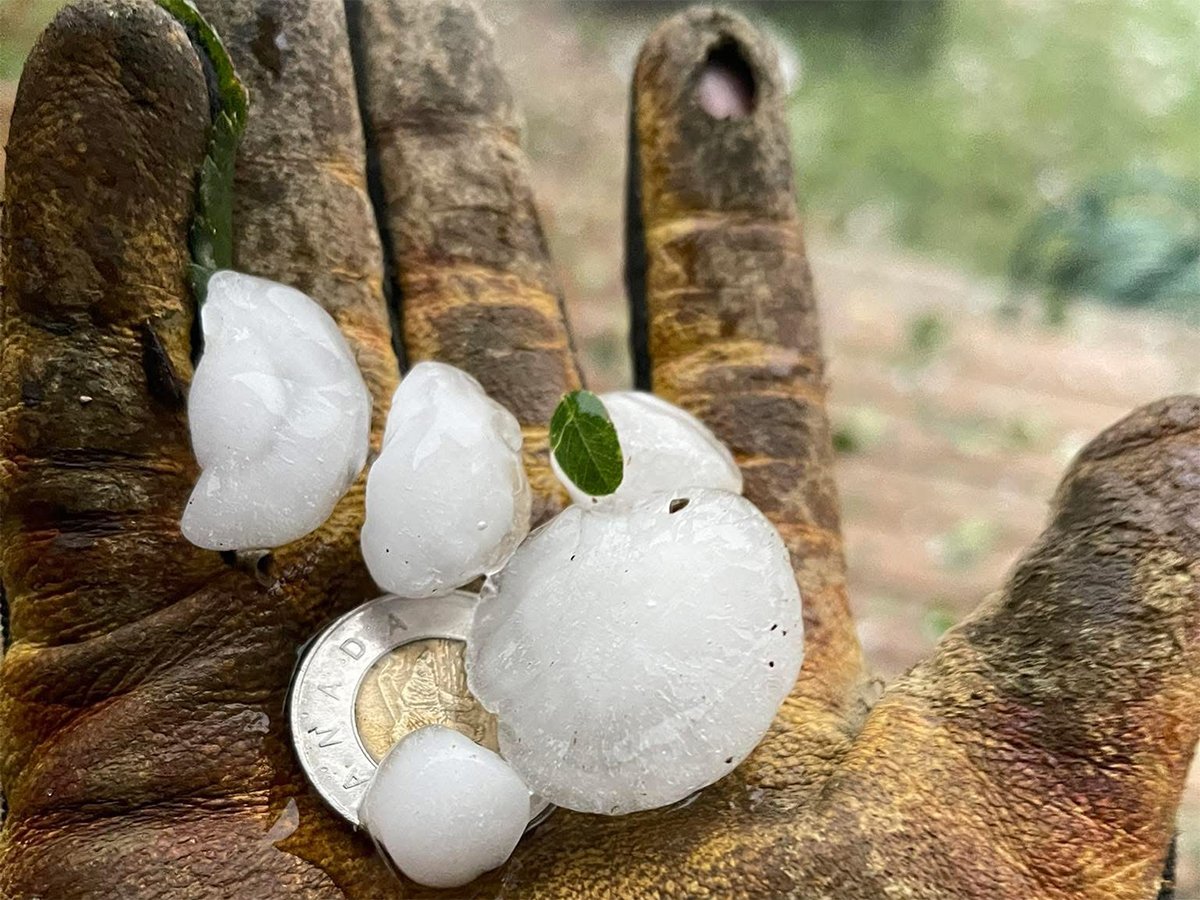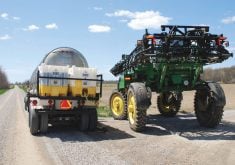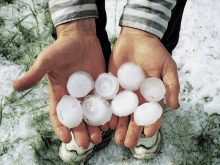Hundreds upon hundreds of insurance claims have come flooding in the aftermath of the devastation of severe hail storm conditions that engulfed a 400-plus kilometre stretch of prime agricultural land in southern Alberta on Aug. 20.
The storm started south of Calgary, making its way to the large grain-producing area of Vulcan, following a line straight for the Saskatchewan border at its end. By the time it arrived to the Brooks/Duchess area, it had reached its peak power, classified as a fast-moving supercell by Environment and Climate Change Canada, making many crops a write-off.
Along with the hail, the wind also pounded the area, with gusts reaching as high as 165 km/hr said the Canadian Severe Storm Laboratory, with monitored areas from Brant, Alta., to Beechy Provincial Pasture in Saskatchewan.
Read Also

Using artificial intelligence in agriculture starts with the right data
Good data is critical as the agriculture sector increasingly adopts new AI technology to drive efficiency, sustainability and trust across all levels of the value chain.
“At this time of the year, the crops are very mature. They are very susceptible to loss. At this point of the year, when they get hit, there’s no coming back,” said George Kueber, manager of claims adjusting at Agriculture Financial Services Corporation.
“When they get hit that severe, in some cases they can have heavy hail loss, but still salvage crop for feed. In this case, there’s nothing to salvage. You couldn’t have got this at a worse time.”
Kueber feels for his clients, given recent growing seasons. The last few years have been fairly dry, where farmers on dryland did not have yields where they wanted. But, they had a good crop coming this year.
“That is what hurts most. Yeah, they have insurance, that is what we are here for at AFSC, but you never like to see that.”
Running the gambit from canola, hybrid canola, cereal crops to some potatoes and corn, AFSC has seen a flood of calls come to their office in the 14-day window they give to clients after Mother Nature hits.
Hail is not uncommon to the region, but its peak season along with supercells for claims usually hits between end of June to mid-August according to Kueber. Being on the tail end of what AFSC usually sees, the organization saw from the singular Aug. 20 date, there have been over 350 hail claims filled for southern Alberta. Factoring in for all of Alberta, that number jumps to over 500 claims filed.
“There were some storms north of there as well,” said Kueber, of another storm that cut across Camrose over to Viking, which was not as large, but severe in spots.
“It affected over a half million acres.”
As devastating as this past storm has been, looking at overall summer numbers, AFSC has been trending slightly lower than normal for hail claims. But for the one-off event, it has been immense.
“That specific date (Aug. 20)… that’s big. To have over 500 claims on one day from two storms, that is on the higher end,” said Kueber.
“We have seen it before. Is it common? No. But, it does happen.”
In recent years, AFSC has done minor tweaks to its claim process, including lengthening its time to 14 days after a storm date to file their claim. That being said, most claims are filed within five days of a storm. AFSC adjusters want to ensure a threshold of 10 per cent loss on a field, making sure of legal land locations to check fields for losses.
“If they are going to change use and use the crop for feed or whatever, they contact their local AFSC branch and let us know that,” said Kueber, adding the extended deadline accounts from some wild card variables beyond the farmer’s control.
“In some of these these severe storms, we’ve had cases roads that have been impassable and they can’t get to look at their field if there is hail damage. This gives them that comfort that they don’t have to rush out there. Take your time, gather yourself and go see where you have your hail loss and enter those fields for us.”
AFSC reminds growers, if they are harvesting their hail-beaten fields and they have not been inspected by adjusters yet, to make sure they leave their inspection strips. If they are salvaging their crop for feed, to contact their local AFSC branch where hopefully farmers are over the worst of it in the province.
“Knock on wood, I hope we are done with hail season. We do get some September storms, but they are a little more minor, but knock on wood, clients can get in there and have a successful harvest.”















